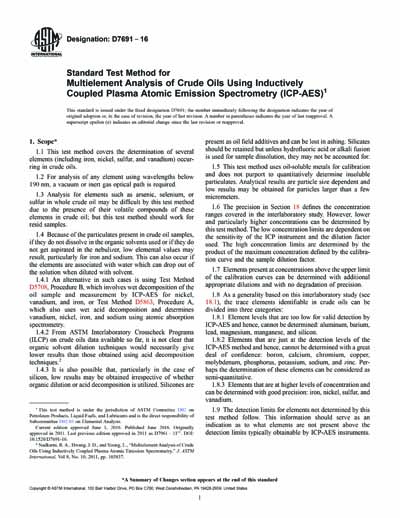Historical
ASTM D7691-16
Standard Test Method for Multielement Analysis of Crude Oils Using Inductively Coupled Plasma Atomic Emission Spectrometry (ICP-AES)
1.1 This test method covers the determination of several elements (including iron, nickel, sulfur, and vanadium) occurring in crude oils.
1.2 For analysis of any element using wavelengths below 190 nm, a vacuum or inert gas optical path is required.
1.3 Analysis for elements such as arsenic, selenium, or sulfur in whole crude oil may be difficult by this test method due to the presence of their volatile compounds of these elements in crude oil; but this test method should work for resid samples.
1.4 Because of the particulates present in crude oil samples, if they do not dissolve in the organic solvents used or if they do not get aspirated in the nebulizer, low elemental values may result, particularly for iron and sodium. This can also occur if the elements are associated with water which can drop out of the solution when diluted with solvent.
1.4.1 An alternative in such cases is using Test Method D5708, Procedure B, which involves wet decomposition of the oil sample and measurement by ICP-AES for nickel, vanadium, and iron, or Test Method D5863, Procedure A, which also uses wet acid decomposition and determines vanadium, nickel, iron, and sodium using atomic absorption spectrometry.
ASTM International [astm]

